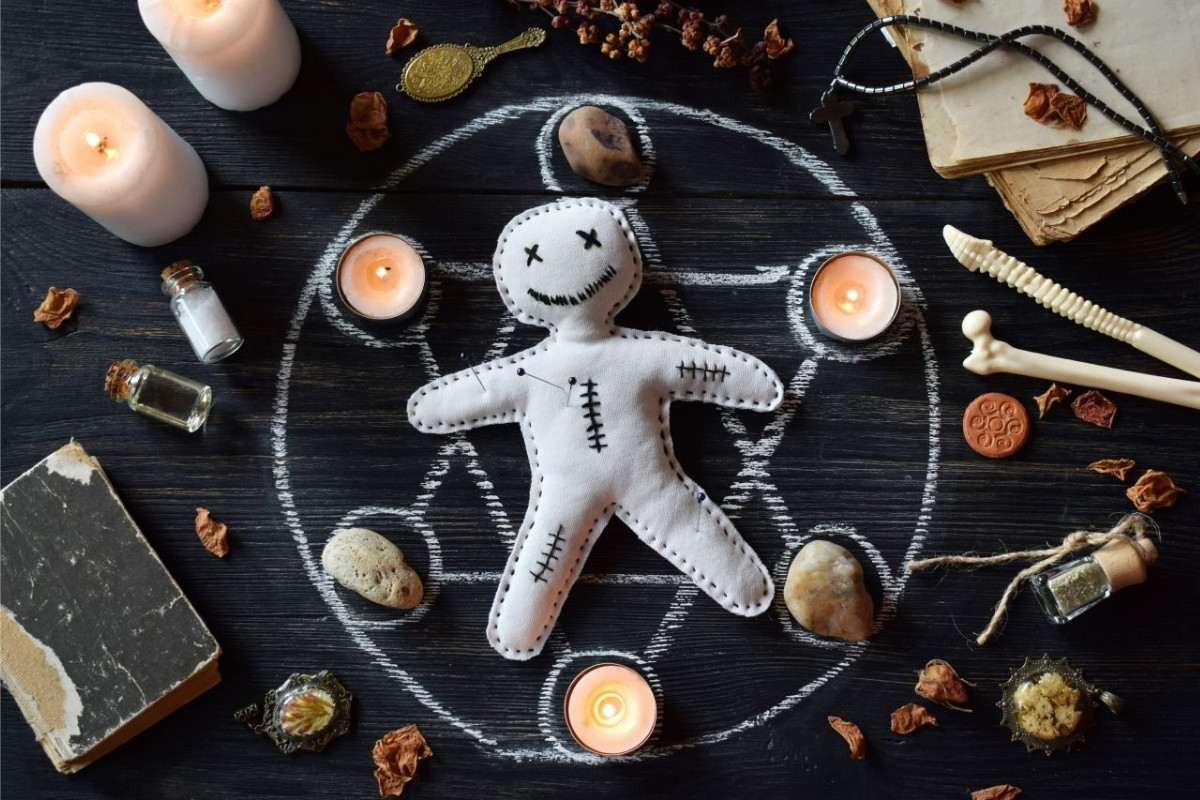
Voodoo is a religion shrouded in mystery and often misunderstood. Originating in West Africa, it traveled to the Caribbean and the Americas through the transatlantic slave trade. Voodoo blends African, Caribbean, and Catholic traditions, creating a rich tapestry of beliefs and practices. Contrary to popular belief, Voodoo isn't about dark magic or curses. It's a spiritual system that emphasizes healing, community, and respect for ancestors. Practitioners, known as Vodouisants, honor spirits called Loa through rituals, music, and dance. Curious about the real Voodoo? Here are 38 facts that will shed light on this fascinating religion.
What is Voodoo?
Voodoo, often misunderstood, is a fascinating and complex religion with deep cultural roots. Originating in West Africa, it has spread across the globe, particularly in Haiti and Louisiana. Let's dive into some intriguing facts about Voodoo.
-
Voodoo is a religion that combines elements of African, Catholic, and Native American traditions.
-
The word "Voodoo" comes from the Fon word "Vodu," meaning spirit or deity.
-
Voodoo practitioners believe in a supreme god called Bondye, who is distant and uninvolved in daily life.
-
Spirits called Loa act as intermediaries between Bondye and humans.
-
Each Loa has distinct characteristics, preferences, and symbols.
-
Voodoo ceremonies often involve music, dance, and offerings to the Loa.
-
Drumming is a crucial part of Voodoo rituals, believed to summon spirits.
-
Voodoo dolls, often misunderstood, are used for healing and protection, not harm.
-
The practice of sticking pins in Voodoo dolls is a Hollywood invention.
-
Voodoo priests and priestesses are known as Houngans and Mambos, respectively.
Voodoo in Haiti
Haiti is often associated with Voodoo, where it plays a significant role in the culture and daily life. Here are some facts about Voodoo in Haiti.
-
Voodoo was brought to Haiti by enslaved Africans in the 16th century.
-
During the Haitian Revolution, Voodoo ceremonies were used to unite and inspire the enslaved people.
-
Voodoo was officially recognized as a religion in Haiti in 2003.
-
Many Haitians practice both Voodoo and Catholicism, blending the two seamlessly.
-
The famous Haitian Voodoo ceremony, Bwa Kayiman, is said to have sparked the Haitian Revolution.
-
Voodoo temples in Haiti are called Hounfours.
-
The annual Fête Gede, or Festival of the Dead, is a major Voodoo celebration in Haiti.
-
Baron Samedi, a Loa associated with death, is a prominent figure in Haitian Voodoo.
Voodoo in Louisiana
Louisiana Voodoo, also known as New Orleans Voodoo, has its own unique characteristics and history. Let's explore some facts about Voodoo in Louisiana.
-
Louisiana Voodoo developed from the African traditions brought by enslaved people and free people of color.
-
Marie Laveau, the famous Voodoo Queen of New Orleans, is a legendary figure in Louisiana Voodoo.
-
St. Louis Cemetery No. 1 in New Orleans is the burial place of Marie Laveau.
-
Louisiana Voodoo incorporates elements of French, Spanish, and Creole culture.
-
Gris-gris bags, filled with herbs, stones, and other items, are used for protection and luck in Louisiana Voodoo.
-
The Voodoo Spiritual Temple in New Orleans is a well-known center for Voodoo practice.
-
Voodoo practitioners in Louisiana often use candles, oils, and powders in their rituals.
-
The annual Voodoo Music + Arts Experience in New Orleans celebrates the city's Voodoo heritage.
Common Misconceptions About Voodoo
Voodoo is often misunderstood and misrepresented in popular culture. Here are some facts to clear up common misconceptions.
-
Voodoo is not synonymous with black magic or witchcraft.
-
Voodoo practitioners do not worship the devil.
-
Voodoo is not a monolithic religion; it varies widely by region and practitioner.
-
Voodoo rituals are not inherently violent or dangerous.
-
Voodoo dolls are not used to harm others but to focus energy for healing and protection.
-
Voodoo is not a secretive or exclusive religion; many practitioners are open about their beliefs.
-
Voodoo ceremonies are often community events, open to anyone who wishes to participate.
Voodoo in Popular Culture
Voodoo has made its way into movies, books, and other forms of popular culture. Here are some interesting facts about Voodoo's portrayal in the media.
-
The 1932 film "White Zombie" is considered the first feature-length Voodoo movie.
-
Voodoo has been featured in James Bond films, such as "Live and Let Die."
-
The character of Dr. Facilier in Disney's "The Princess and the Frog" is inspired by Voodoo culture.
-
Voodoo has influenced music genres like jazz, blues, and rock.
-
Many TV shows, such as "American Horror Story: Coven," have included Voodoo storylines.
Final Thoughts on Voodoo
Voodoo is a fascinating blend of religion, culture, and history. It’s often misunderstood, but it’s rich in traditions and beliefs that have shaped communities for centuries. From its roots in West Africa to its evolution in Haiti and New Orleans, Voodoo has influenced music, art, and even cuisine. It’s not just about spells and rituals; it’s a way of life for many. Understanding Voodoo requires an open mind and respect for its complexities. Whether you’re intrigued by its spiritual aspects or its cultural impact, there’s no denying Voodoo’s unique place in the world. So next time you hear about Voodoo, remember it’s more than just a Hollywood trope. It’s a vibrant, living tradition that continues to thrive and evolve. Dive deeper, and you might just find yourself captivated by its mysteries.
Was this page helpful?
Our commitment to delivering trustworthy and engaging content is at the heart of what we do. Each fact on our site is contributed by real users like you, bringing a wealth of diverse insights and information. To ensure the highest standards of accuracy and reliability, our dedicated editors meticulously review each submission. This process guarantees that the facts we share are not only fascinating but also credible. Trust in our commitment to quality and authenticity as you explore and learn with us.
